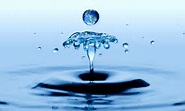Water Quality








WATER QUALITY
For those who do drink water, the current choice becomes one of source. Do we drink tap-,filtered, or distilled water? Bottled water is popular these days, as we are forced to address our concerns for health and worry about the ability of modern water processing to successfully remove all the pollutants from our municipal supplies. But not all bottled water is created equals we shall see.
In the spring of 2000, the town of Walkerton, Ontario, experienced an outbreak of E.coli in its drinking water. At least eleven people died, and a number of other deaths may have been linked to the outbreak. Hundreds ended up in hospitals and doctor's offices, and the ongoing investigation indicates that at least some levels of government were warned of the problem months, perhaps years, before it hit the critical point.
In the United States, the EPA (Environmental Protection Agency) has reported that much of the tap water may contain a wide variety of pharmaceutical drugs passed on from humans through their urine, as well as toxins seeping in from agricultural sources. There is even an urban legend in circulation that Seattle's water supply is now caffeinated due to the enthusiastic coffee consumption of that city!
Cryptosporidium is a waterborne parasite that lives in animals and can be passed into water sources through their waste. It has been found in rivers, lakes, reservoirs, and other types of surface water. In 1993 cryptosporidium in the water supply caused four hundred thousand residents of Milwaukee to become ill with flulike symptoms, and some of the very young and very old victims died.
Later that year, a failure of Washington, D.C.'s filtration process caused elevated turbidity (particulate matter in the water)and an increase in gastrointestinal complaints. No wonder people are turning to bottled water. Bottled water may come from underground aquifers, springs, wells, and other deep-water sources that are protected from the environment and tested for purity.
These waters are the product of hundreds of thousands of years of natural filtration and purification by the planet and are the most desirable waters for health purposes. Bottled water may also be taken from surface, subsurface, or shallow groundwater, lakes and streams; or approved municipal supplies. Water from these sources is subject to purification processes according to government regulations.
The centres for Disease Control (CDC) in Atlanta recommends reverse osmosis, one-micronabsolute filtration, ozonation, and distillation as the preffered method for purifying municipal and surface water. As far as shelf life is concerned, in some countries it is two years from the date of bottling, regardless of whether the packaging is glass or plastic. Plastic bottles have been suspected of releasing toxins (phalates)into the products they carry, but most of the data find no problem with water in plastic, owing to its generally nonreactive nature.
Clean water and where to find it is the big problem. The questions remaining are: How safe and effective is modern water filteration? How reliable are the tests being done? Trihalomethanes (THMs), the best known of which is chloroform, are suspected of being carcinogenic and can be created when chlorine is added during water treatment and it interacts with organic matter in suspension.
Areas where the municipal water sources are surface or subsurface , such as lakes, rivers, and shallow groundwater, contain the highest quantities of organic matter and are the most likely to develop THMs. The more time there is between water treatment and delivery, the more concentration increases, and it continues to increase as long as "free chlorine residuals " are present - a case of more chlorine than is necessary being added to the water.
High pH levels and warm temperatures also increase formation of THMs, which means that summer months show higher counts in drinking water and that hot water is more likely to contain these toxic chemicals. Researchers in California have linked a likelihood of miscarriage with high THM counts in drinking water, and the studies have been repeated in Canada with similar findings on both miscarriages and stillbirths, reported in the professional journal Epidemiology.
Reference: Hydrosols The Next Aromatherapy : Suzanne Catty
Articles - Most Read
- Home
- What are Hydrosols
- What are Hydrosols-2
- The Monographs
- How to Make a Hydrosol
- Distilled or Extracted Specifically For Therapeutic Use - 3
- Table of Common Latin Names and pH Values - F - O
- Kurt Schnaubelt
- What isn't a Hydrosol?
- Table of Common Latin Names and pH Values - P - S
- Wholly Water!
- Blue Babies
- Supply and Demands
- Mature Skin
- Recipes Alpha F
- Hydrosols In The Marketplace
- Hemorrhoids
- Chemicals: Friends or Foes?
- Nelly GrosJean
- Water as Medicine
- The Educated Consumer
- Influences
- Genitically Modified Plants
- Water Quality
Articles-latest
- Daucus carota/Wild Carrot Seed - pH 3.8-4.0
- Cupressus sempervirens/ Cypress-pH3.5-3.7
- Coriandrum sativum/Coriander Herb-and-Seed
- Comptonia peregrinal/Sweet Fern- pH 3.8
- Citrus clementine (fe) Clementine Petitgrain- pH 4.3-4.4
- Citrus aurantium var. amara (flos) /Neroli Orange Blossom-pH3.8-4.5
- Cistus ladaniferus/Rock Rose-pH 2.9-3.1
- Cinnamomum zeylanicum (ec) Cinnamon Bark-pH3.3
- Chamaemelum nobile/Roman Chamomile - pH 3.0-3,3
- Centaurea cyanus/Cornflower/Bachelor's Button-pH 4.7-5.0
- Cedrus atlantical/Cedarwood/Atlas Cedar-pH 4.1- 4.2
- Hydrosols -The PH - Anomalies
- Hydrosols- Establishing Shelf Life and Stability
- Boswellia carterii/FRANKINCENSE
- Asarum canadense/ Wild Ginger/Canadian Ginger
- Artemesia vulgaris / Artemesia
- ARTEMESIA DRACUNCULUS - TARRAGON
- Angelica archangelica / Angelica Root - Hydrosols
- The Key, or More Correctly, the pH - 2 - Hydrosols
- The Key, or More Correctly, the pH-Hydrosols
- The Hard pHacts - Hydrosols
- Calamus Root/Sweet Flag - ACORUS CALAMUS
- Yarrow - Achillea millefolium - Hydrosols
- Balsam Fir - Abies balsamea - Hydrosols

